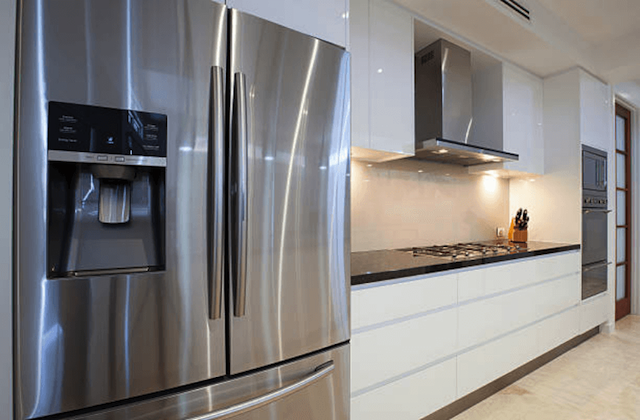Why is My Refrigerator Ice Maker Not Working?

P&G Baltimore Appliance Repair provides refrigerator repair in Baltimore, including professional services to repair broken ice makers. Learn about some common ice maker problems below:
Refrigerator ice makers are perhaps one of the best inventions of all time. An ice maker is a small luxury most people might take for granted. Refrigerator ice makers are relatively simple machines that don’t feature a lot of complicated components that can cause problems.
As with any appliance repair, there are basic things that need to be looked at before assuming the worst. And, remember, if necessary, you are able to replace the ice maker without replacing the entire fridge, depending on the brand and model. First, let’s review some of the reasons for an ice maker breaking.
If the ice maker is making ice but it isn’t dispensing it it is usually means there is a mechanical problem opposed to an electrical problem. This can occur when reorganizing food around in the freezer unit, you might shift the control arm up or down. Often the ice maker might be blocked with something, even another piece of ice. So, check to see if there is ice or food blocking this part from working correctly.
Before beginning the steps of clearing out the freezer, ensure the ice maker is on. This can be done by pulling the control arm down. From time to time, moving food around in the freezer can put the switch into the off position. If the control arm is free, then there could be food or ice stuck inside the ice maker or it’s not getting a good connection.
Check the Control Arm
When the control is down and there is ice but it is not dispensing it, this could be an electrical or mechanical issue. This is going to require a bit more troubleshooting. Ready to proceed? First, we need to check the electrical connection. This could become unplugged from behind the freezer when moving or shifting the food in the freezer.
To check this, unplug the freezer and move away from the wall. Then, turn off the water supply valve. Locate the valve on the back of the inside of the freezer. Essentially this is what connects the ice maker into the freezer unit. Ensure that it’s plugged in properly.
Next, remove any ice that is in the ice maker itself. This can be done by pouring in a bit of water to help to get the ice that is inside of there out.
Once done, restore power to the fridge and turn on the ice maker. It may take the solenoid component a couple of seconds to engage and fill the mold. When the mold is full, wait around 4-5 hours to see if you’ve cleared the problem.
Check for Frozen Lines
Other ice maker problems that will cause your ice maker to not produce ice are frozen water lines. The water lines could be blocked with frost. This is an easy issue to fix.
Unplug the freezer and locate the shut off valve. Turn the water off and get a hair dryer to warm the water line or let the freezer sit without being on for a couple of hours until the water line is thawed.
There are some brands and models that have a water filter that can freeze or ice over. For these situations, finding the filter is the first step. Then repeat the same process that was done for the iced line.
If an ice maker is not making big enough cubes of ice, there is a problem with the settings. To adjust the settings, take the upper part of the cover of the ice maker off and locate a basic control that displays plus and a minus signs. For this process, you may need a flat head screwdriver.
ADDITIONAL REFRIGERATOR RESOURCES
- Refrigerator Noisy
- Refrigerator Water Dispenser Not Working
- Refrigerator Not Cooling
- How Does a Refrigerator Work?
Home Services Campaign Disclaimer: This site is a free service to assist homeowners in connecting with local service providers. All contractors/providers are independent and this site does not warrant or guarantee any work performed. It is the responsibility of the homeowner to verify that the hired contractor furnishes the necessary license and insurance required for the work being performed. All persons depicted in a photo or video are actors or models and not contractors listed on this site.
Copyright ©2025 P&G Baltimore Appliance Repair